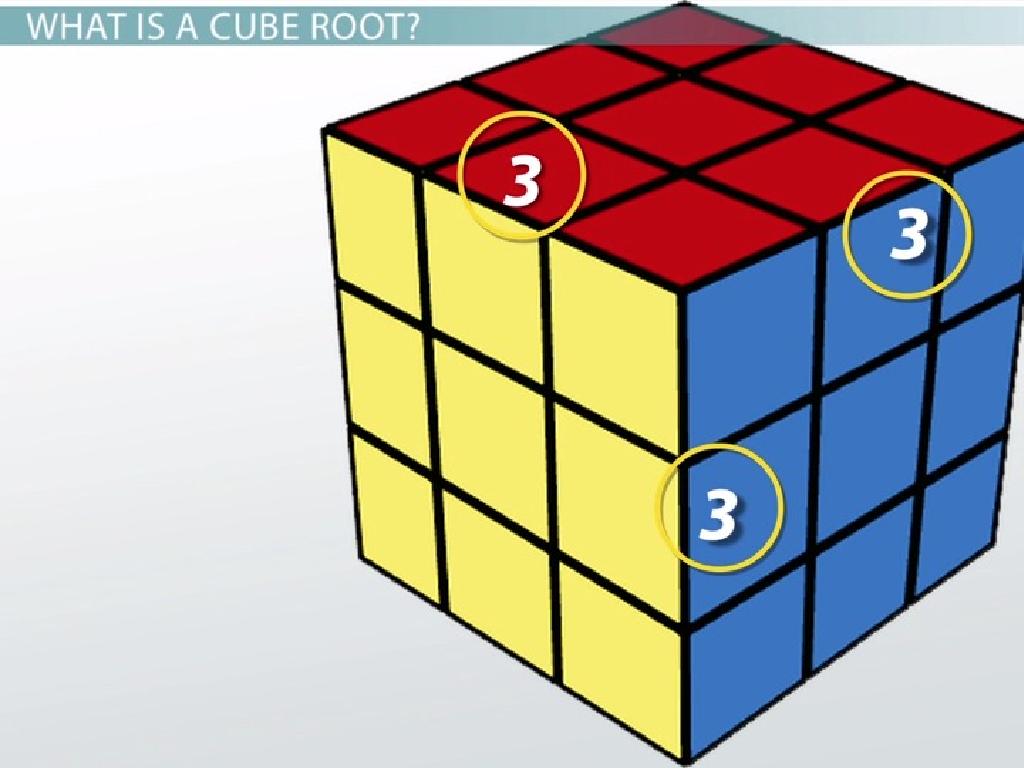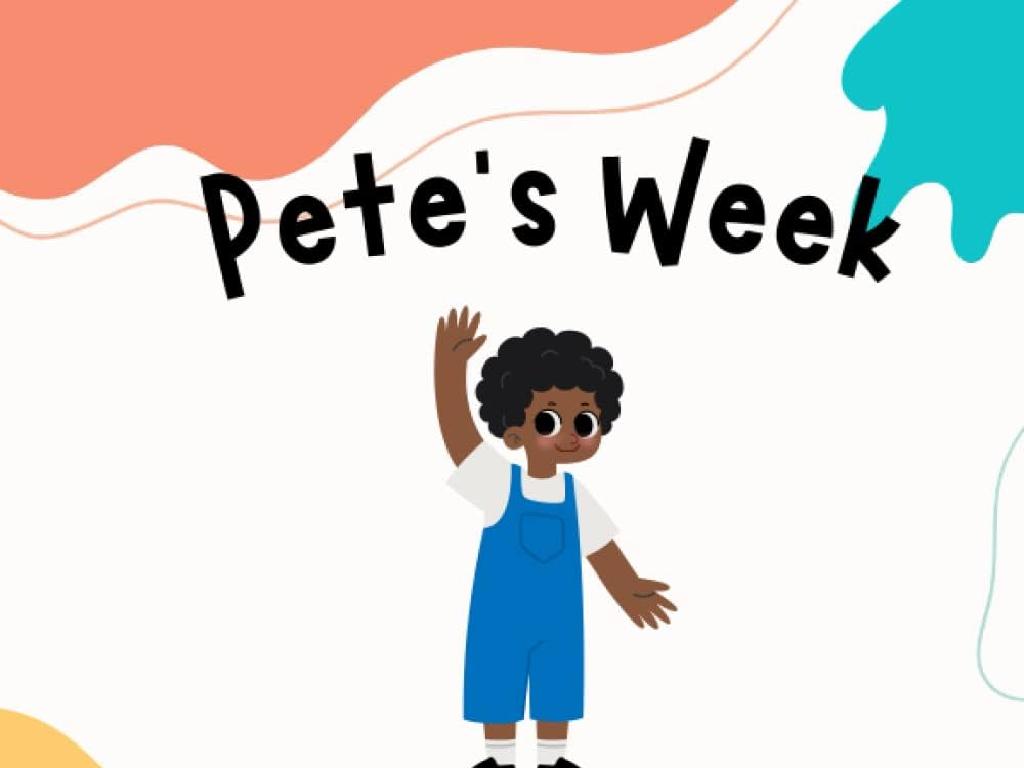Add A Two-Digit And A One-Digit Number - Without Regrouping
Subject: Math
Grade: Second grade
Topic: Addition: Two Digits
Please LOG IN to download the presentation. Access is available to registered users only.
View More Content
Welcome to Addition!
– Understanding addition
– Addition means combining numbers together
– Adding two-digit and one-digit numbers
– Example: 23 (two-digit) + 5 (one-digit)
– No regrouping needed
– Keep numbers in the correct place value
– Combining numbers to find the sum
– Add the numbers to see what they make
|
This slide introduces the concept of addition to second-grade students. Start by explaining that addition is the process of combining two or more numbers to find their total, or sum. Use simple language and examples to show how to add a two-digit number to a one-digit number, emphasizing that they do not need to regroup, or ‘carry,’ in this lesson. Demonstrate with an example on the board, such as 23 + 5, aligning the numbers by place value and adding the ones place first, followed by the tens place. Encourage students to think of addition as putting together groups of objects, which can help them visualize the concept. Prepare to guide them through several examples and provide hands-on activities with manipulatives if possible.
Understanding Two-Digit Numbers
– What are two-digit numbers?
– Numbers with two digits, like 34 or 81
– Examples: 10, 23, 45
– 10 is made of 1 ten and 0 ones, 23 has 2 tens and 3 ones
– ‘Tens’ and ‘ones’ places
– The first digit is tens, the second is ones
– Adding without regrouping
– We can add numbers directly when the ones don’t add up to 10 or more
|
This slide introduces second graders to the concept of two-digit numbers, emphasizing the ‘tens’ and ‘ones’ place values. Start by explaining that two-digit numbers are numbers that have two digits, each holding a place value. Provide clear examples of two-digit numbers and break them down into tens and ones. Then, transition to explaining how to add a two-digit number to a one-digit number without regrouping, ensuring to clarify that regrouping is not needed when the sum of the ones place is less than ten. Use visual aids like number blocks or place value charts if possible to help students visualize the concept. Encourage students to practice with simple addition problems that do not require regrouping.
Understanding One-Digit Numbers
– What are one-digit numbers?
– Numbers from 0 to 9 are one-digit numbers
– Building blocks of big numbers
– Like Lego, one-digit numbers join to make bigger numbers
– Naming all one-digit numbers
– Let’s list numbers 0, 1, 2, 3, 4, 5, 6, 7, 8, 9 together
– Adding without regrouping
– When we add, if the sum is less than 10, we don’t regroup
|
This slide introduces the concept of one-digit numbers to second-grade students, emphasizing their importance as the foundation for understanding larger numbers. Start by explaining that one-digit numbers range from 0 to 9. Use visual aids like blocks or fingers to help students visualize these numbers as the basic units of our number system. Encourage the students to recite the one-digit numbers to reinforce their understanding. Then, introduce the concept of adding these numbers to two-digit numbers without regrouping, ensuring to explain that regrouping is not needed if the sum is less than 10. Provide examples and plan for interactive activities where students can practice this skill.
Adding Without Regrouping
– Understanding no regrouping
– All numbers fit in their place without overflowing
– No carrying over numbers
– Example: 23 + 5
– Add 5 to 23, place values don’t change, sum is 28
– Practice makes perfect
– Try more examples to get better at it!
|
This slide introduces the concept of adding two-digit and one-digit numbers without the need for regrouping. Regrouping is not required when the sum of the ones place does not exceed nine. It’s crucial to emphasize that each digit has its own place value and that adding a one-digit number to a two-digit number is straightforward when regrouping is not necessary. Start with an example like 23 + 5, where students can see that the ones place (3 + 5) equals 8, which is less than 10, so it fits nicely without needing to carry over. Encourage students to practice with similar problems to build their confidence and reinforce the concept.
Adding Two-Digit and One-Digit Numbers
– Start with adding the ones
– Add 3 (from 23) and 5 to get 8
– Bring down the tens digit
– The number 2 (from 23) remains unchanged
– Combine the digits for the answer
– The final answer is the combination of unchanged tens and new ones
– Practice with an example: 23 + 5
– 3 + 5 = 8 and 2 stays the same, so the answer is 28
|
This slide is aimed at teaching second-grade students how to add a two-digit number to a one-digit number without regrouping. Start by focusing on the ones place, adding the one-digit number to the ones place of the two-digit number. Next, emphasize that the tens digit does not change because we are not regrouping. Combine the new ones place with the original tens place to find the answer. Use the example 23 + 5 to illustrate the process: add the ones (3 + 5 = 8), bring down the tens (2), and combine them to get the answer (28). Encourage students to practice with similar problems and ensure they understand each step before moving on to more complex addition.
Let’s Practice Addition Together!
– Start with adding the ones
– If you have 25 + 3, add 5 (ones) + 3 first
– Then add the tens place
– Next, add 20 (tens) + 0 since there are no tens to add to 3
– It’s okay to make mistakes
– Practice makes perfect
– Keep trying with different numbers!
|
This slide is an interactive practice for students to reinforce their understanding of adding two-digit and one-digit numbers without regrouping. Start by reminding them to add the ones place numbers first, which helps avoid confusion and builds a foundation for learning regrouping later on. Emphasize that making mistakes is a natural part of learning and encourage them to try again. Provide several examples for the students to work through and offer positive reinforcement as they practice. You can use number cards or interactive whiteboard activities to make this practice session engaging. Remember to walk around the classroom to assist any student who might need extra help.
Class Activity: Addition Bingo
– Let’s play Addition Bingo!
– Listen for the addition problem
– Solve it and check your Bingo card
– Use mental math to add without regrouping
– Aim for five correct answers in a row
|
This interactive game is designed to help second graders practice addition without regrouping. Distribute the Bingo cards, each with a different combination of numbers. Call out addition problems involving a two-digit number and a one-digit number. Students will solve the problems and mark the answers on their cards. The goal is to get five correct answers in a row, horizontally, vertically, or diagonally. Possible variations of the activity include: using different colored markers for each student, offering small rewards for winners, or playing in small groups. This activity reinforces mental addition skills and offers a fun break from traditional worksheets.






